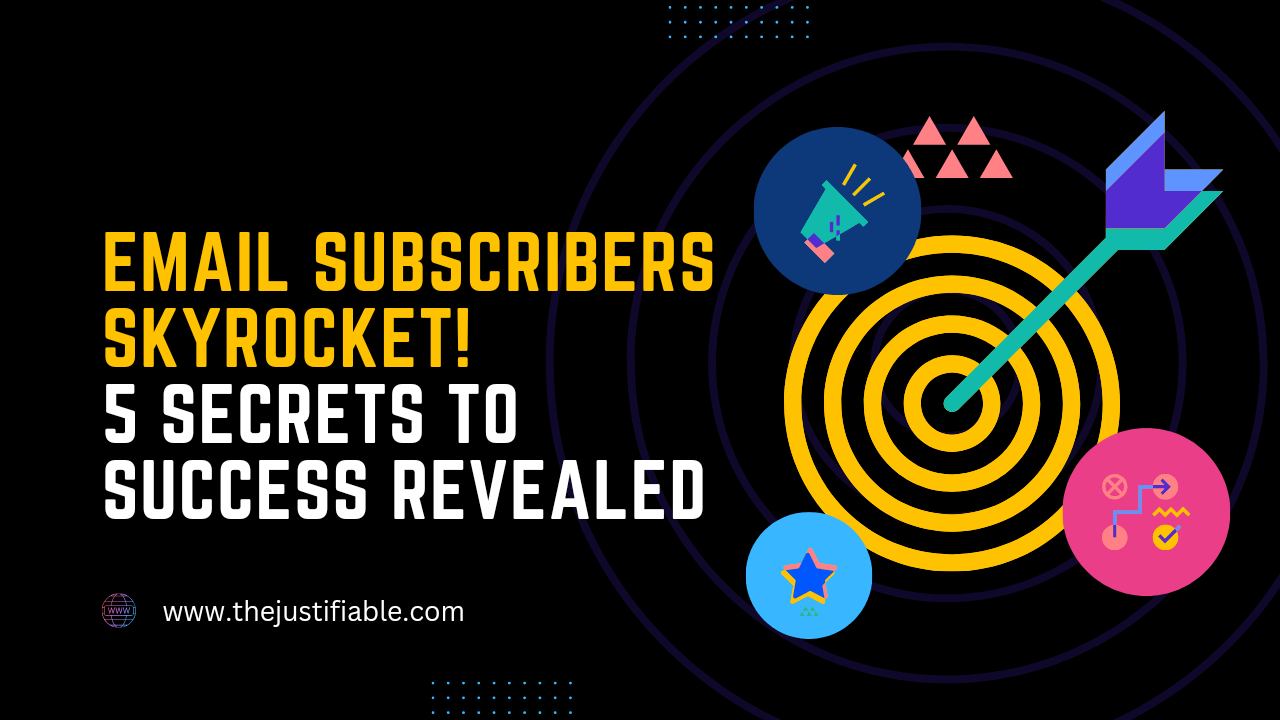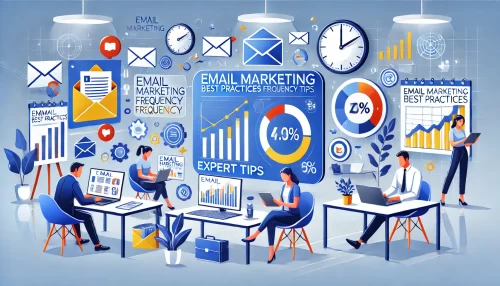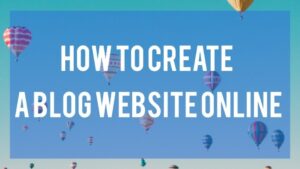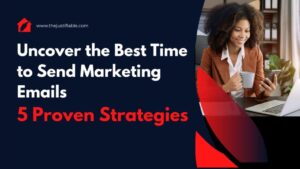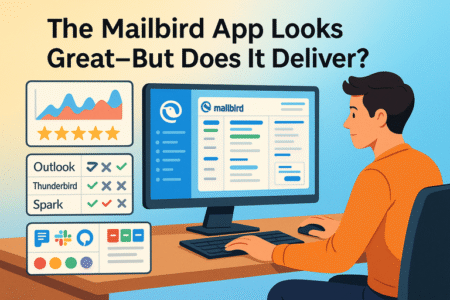Table of Contents
Email subscribers are the lifeblood of digital marketing, and understanding the magic behind their growth is crucial for businesses and bloggers alike. Imagine if every time you sent an email, it reached not just a handful of people, but thousands, all eagerly waiting to read what you have to say. This isn’t just a dream; it’s a reality for those who have mastered the art of subscriber engagement and growth.
Today, I’m going to reveal five key strategies that have been instrumental in skyrocketing email subscriber numbers for countless successful businesses and bloggers. These aren’t just theoretical ideas; they’re practical, actionable tactics backed by real-world success stories and data. From crafting irresistible email content to leveraging the latest in digital marketing techniques, these secrets will unlock new levels of success for your email campaigns.
Whether you’re a seasoned marketer or a blogging newbie, these insights will provide you with the tools you need to significantly grow your email subscribers and achieve remarkable results in your digital marketing endeavors. Let’s unveil these secrets and start our journey to email marketing mastery.
Understanding the Email Subscriber Growth Phenomenon
In the realm of digital marketing, the effectiveness of email campaigns has been a subject of extensive analysis and discussion. Recent trends and statistics shed light on the undeniable power of email marketing, reaffirming its status as a cornerstone of successful business strategies. The journey of email marketing from a simple communication tool to a sophisticated marketing weapon is nothing short of remarkable.
Let’s delve into the numbers that paint this success story. Studies reveal that for every dollar spent on email marketing, businesses can expect an average return of $42. This staggering ROI is a testament to the effectiveness of email marketing in driving sales and fostering business growth. But the magic of email marketing isn’t just in its ability to boost sales; it’s also in how it strengthens the relationship between a brand and its audience.
The growth of email subscribers is intricately linked to business success. When your subscriber list grows, it’s not just a number increasing; it’s a community of engaged individuals who are interested in what you have to offer. These subscribers are your direct line to potential customers. They’ve given you permission to enter their inbox, a privilege that speaks volumes about their interest and trust in your brand.
This growing trust is reflected in open and click-through rates, key indicators of engagement in email marketing. With the average open rate for emails hovering around 18% and click-through rates at about 2.6%, it’s evident that emails continue to be a powerful tool for engagement. However, the true value lies in nurturing these rates and turning them into meaningful interactions and, eventually, conversions.
In today’s fast-paced digital landscape, consumers are bombarded with information from all sides. Standing out in a crowded inbox requires more than just catchy subject lines; it demands content that resonates with your audience on a personal level. The businesses that understand this are the ones that see their subscriber numbers not just grow, but thrive. They create email content that’s not only informative and engaging but also tailored to the unique needs and interests of their subscribers.
It’s this personal touch, combined with the strategic use of data and technology, that has propelled email marketing to new heights. As artificial intelligence and machine learning continue to evolve, the possibilities for personalized, targeted email campaigns become even more exciting. The future of email marketing is not just about growing subscriber numbers; it’s about deepening the connection with each subscriber, turning every email into a personalized conversation.
Secret #1: Crafting Compelling Subject Lines
In the world of email marketing, the subject line is the gatekeeper. It’s the first thing your subscribers see, and it can make or break the success of your email. A powerful subject line is like a siren song, enticing your subscribers to open the email and dive into the content you’ve carefully crafted. Here, we unravel the art and science of creating subject lines that don’t just capture attention but also significantly boost open rates.
The impact of a well-crafted subject line on open rates cannot be overstated. Data shows that emails with personalized subject lines are 26% more likely to be opened. This statistic alone speaks volumes about the importance of tailoring your subject lines to resonate with your audience. But personalization is just one piece of the puzzle. The real challenge lies in striking a balance between creativity and clarity, ensuring your message is both intriguing and understandable at a glance.
Imagine your email in an inbox surrounded by hundreds of others. What makes it stand out? Is it a sense of urgency, a touch of humor, or a promise of value? The answer lies in understanding your audience. A/B testing different styles of subject lines can provide valuable insights into what resonates with your subscribers. Whether it’s a compelling question, a surprising fact, or a tempting offer, the right subject line speaks directly to the interests and needs of your audience.
Now, let’s talk about the ripple effect of increased open rates. When more subscribers open your emails, you’re not just achieving a short-term win; you’re fostering long-term growth. Higher open rates lead to increased engagement, which in turn signals to email service providers that your content is valuable. This can improve your overall deliverability, ensuring your emails reach the inbox and not the spam folder.
Moreover, a consistent track record of high open rates builds your reputation as a sender. Your subscribers start to recognize and anticipate your emails, knowing that what you send is worth their time. This growing trust is a crucial factor in the growth of your email subscribers. Satisfied subscribers are more likely to share your content, recommend your newsletter, and become advocates for your brand, naturally expanding your reach and subscriber base.
Secret #2: Leveraging Personalization for Engagement
In the dynamic landscape of email marketing, personalization is not just a buzzword; it’s a powerful tool that can significantly amplify subscriber engagement and growth. Gone are the days when generic, one-size-fits-all emails were sufficient. Today, the focus is on creating a personalized experience that speaks directly to each subscriber, making them feel valued and understood. Let’s explore how this personal touch transforms the email marketing game.
Personalization in email marketing goes beyond addressing subscribers by their first name. It involves tailoring content to match individual preferences, behaviors, and needs. Imagine receiving an email that seems like it was written just for you, with recommendations, content, and offers that align perfectly with your interests. This level of personalization not only captures attention but also fosters a deeper connection with the brand, leading to increased engagement and loyalty.
The statistics supporting the effectiveness of personalized emails are compelling. Emails with personalized subject lines are 26% more likely to be opened, while emails that offer personalized content can improve click-through rates by up to 14%, and conversion rates by 10%. These numbers clearly demonstrate the impact of personalization on subscriber engagement. But the benefits don’t stop there. Personalized emails can also reduce unsubscribe rates by up to 18%, ensuring that your hard-earned subscribers stick around for the long haul.
This surge in engagement and growth is not just about better metrics; it’s about building a relationship with your subscribers. When subscribers feel that your content is relevant to their needs and interests, they’re more likely to engage with your emails, visit your website, and ultimately, convert into loyal customers. This is the power of personalization – it turns your emails into a bridge between your brand and your subscribers, creating a two-way conversation that benefits both parties.
Furthermore, personalized emails can help segment your audience effectively, allowing you to send targeted messages that resonate with different groups. This segmentation is key to delivering the right message to the right person at the right time, a strategy that significantly boosts the effectiveness of your email marketing campaigns.
Secret #3: Optimizing Sending Times and Frequency
Navigating the landscape of email marketing requires a keen understanding of when and how often to engage your audience. The timing and frequency of your emails play a pivotal role in maximizing open rates and, ultimately, in increasing your email subscribers. Let’s dive into the strategic world of timing and frequency, unveiling how these critical factors can lead to a remarkable surge in your subscriber base.
Determining the optimal time to send emails can feel like decoding a secret formula. However, insights from various studies provide valuable guidance. Generally, midweek days, particularly Tuesday and Thursday, have shown higher open rates. The reason? It’s when people are most active in their professional lives, checking their emails regularly. As for the time, late mornings, around 10-11 AM, often yield the best results. This is when most people have settled into their workday and take a moment to check their inboxes.
But here’s the twist – the best time isn’t one-size-fits-all. It varies depending on your audience’s habits and time zones. This is where the power of analytics and testing comes in. By analyzing your email campaign data and conducting A/B tests, you can identify the sweet spot that resonates with your unique audience. This tailored approach ensures that your emails land in your subscribers’ inboxes at just the right moment, increasing the likelihood of them being opened and read.
Now, let’s talk frequency. Bombarding subscribers with daily emails can be overwhelming, leading to higher unsubscribe rates. On the other hand, sending emails too infrequently can cause your subscribers to forget about you. Finding the right balance is key. Studies suggest that sending 2-3 emails per week can be effective for maintaining engagement without causing fatigue. This frequency keeps your brand top-of-mind while respecting your subscribers’ inbox space.
The impact of these factors on subscriber growth is significant. For instance, emails sent at the optimal time can see open rates increase by up to 6%, while the right frequency can boost click-through rates by up to 2%. These improvements in engagement are crucial for not only retaining existing subscribers but also attracting new ones. Engaged subscribers are more likely to share your content and recommend your brand, organically growing your subscriber list.
Secret #4: Utilizing High-Value Lead Magnets
In the quest to grow your email subscribers, lead magnets emerge as a powerful and indispensable tool. But what exactly is a lead magnet? It’s essentially an irresistible offer, a piece of value you give away for free in exchange for an email address. This trade-off, when executed well, not only increases your subscriber list but also enhances the quality of your audience engagement.
The effectiveness of lead magnets lies in their ability to provide immediate value to your potential subscribers. Whether it’s an informative e-book, an exclusive webinar, a handy template, or a comprehensive guide, a good lead magnet addresses a specific need or solves a problem for your audience. It’s not just about giving something away for free; it’s about offering something so valuable that your audience can’t help but want more from you.
Let’s delve into the impact of lead magnets on subscriber growth. Studies have shown that businesses using lead magnets can increase their email sign-up rates by an impressive 50%. This surge in sign-ups is no small feat in the competitive digital space where capturing attention is a constant challenge. A well-crafted lead magnet not only captures attention but also paves the way for a relationship built on value and trust.
Consider, for instance, a digital marketing agency offering a free SEO checklist. For a business struggling to improve its online presence, this checklist is not just another PDF; it’s a roadmap to potential success. The agency, in turn, gains a subscriber genuinely interested in SEO, making future communications more relevant and impactful.
Another compelling example is a health and wellness blog providing a free meal planner. For readers looking to improve their diet, this planner is a practical tool they can use immediately. In exchange, the blog gains subscribers who are likely to engage with future content related to health and nutrition.
Creating an effective lead magnet requires a deep understanding of your audience’s needs and interests. It’s about identifying a gap or a challenge they face and presenting a solution that’s just a subscription away. The key is to ensure that the value of the lead magnet is crystal clear – it should be so enticing that giving up an email address feels like a small price to pay.
Secret #5: Streamlining the Subscription Process
In the fast-paced world of digital marketing, the ease and simplicity of the subscription process play a crucial role in the growth of email subscribers. A user-friendly subscription process isn’t just a nice-to-have; it’s a fundamental element that can dramatically influence a user’s decision to subscribe. Let’s explore how streamlining this process can be a game-changer in expanding your email list.
The core idea behind a streamlined subscription process is reducing friction. Every extra step or unnecessary field in the subscription form is an obstacle that can deter potential subscribers. The modern internet user values ease and speed, and any process that feels cumbersome or time-consuming is likely to be abandoned. This is where the magic of simplicity comes in.
Evidence supporting the simplification of the subscription process is compelling. Studies have shown that reducing the number of fields in a subscription form from eleven to four can increase conversion rates by up to 120%. This staggering statistic highlights the direct impact of a user-friendly subscription process on the growth of your email subscribers. It’s a clear indication that when it comes to forms, less is more.
Imagine a potential subscriber visiting your website, intrigued by your content and considering signing up for more. They encounter a subscription form that’s concise, clearly structured, and straightforward to complete. This hassle-free experience not only encourages them to complete the subscription but also leaves a positive impression of your brand. It’s a small yet significant interaction that can set the tone for your future communications.
Incorporating elements like a single-field subscription form, a clear call-to-action, and a hassle-free opt-in process can substantially boost your subscriber numbers. It’s about creating a journey that’s not just easy but also enjoyable. Think of it as rolling out a red carpet for your potential subscribers, welcoming them to your community with open arms.
Moreover, transparency and respect for user preferences are integral to a user-friendly subscription process. Providing clear information about what subscribers can expect in terms of content and frequency, along with easy options to unsubscribe, builds trust and respect. This approach not only increases the likelihood of sign-ups but also contributes to a higher quality subscriber list, filled with people genuinely interested in what you have to offer.
Implementing A/B Testing for Continuous Improvement
In the quest to grow your email subscribers, A/B testing emerges as a crucial tool, akin to a compass guiding your email marketing strategies towards success. This method, also known as split testing, involves comparing two versions of an email to see which one performs better. By embracing A/B testing, you not only fine-tune your emails but also gain valuable insights into the preferences and behaviors of your audience.
Let’s delve into how A/B testing works in the realm of email marketing. Imagine you’re unsure whether a playful or professional tone resonates more with your audience. You could create two versions of your email: one with a casual, friendly tone and the other more formal and business-like. By sending these versions to different segments of your audience, you can analyze which one yields higher open rates, click-through rates, or any other metric relevant to your goals. This process of trial and improvement is the essence of A/B testing.
The impact of A/B testing on the growth of email subscribers is backed by compelling data. For instance, marketers who use A/B testing can see an increase in conversion rates by up to 49%. This impressive figure underscores the power of understanding and catering to your audience’s preferences. It’s not just about sending emails; it’s about sending the right emails.
A/B testing can be applied to various elements of an email, from the subject line and content to the design and call-to-action. By systematically testing and refining these elements, you can gradually improve your email’s performance. For example, a study revealed that a well-crafted call-to-action, optimized through A/B testing, can increase click-through rates by up to 90%. This shows how even small changes, informed by data, can have a significant impact on your email strategy.
However, the benefits of A/B testing go beyond just boosting immediate metrics. This practice fosters a culture of continuous improvement and learning within your marketing team. It encourages a mindset that is always seeking to better understand and serve the audience. By regularly implementing A/B tests, you stay in tune with your subscribers’ evolving needs and preferences, ensuring your content remains relevant and engaging.
Regularly Analyzing Subscriber Data for Insights
In the intricate dance of email marketing, the rhythm is set by your subscribers. To keep in step with their ever-changing preferences and needs, regular analysis of subscriber data is not just important; it’s essential. This deep dive into data offers a treasure trove of insights, enabling you to tailor your strategies for maximum impact and continuous growth of your email subscribers.
Imagine your subscriber data as a roadmap. Each piece of data, from open rates to click-through rates, from geographical location to engagement history, acts as a signpost, guiding your decisions and strategies. By regularly analyzing this data, you can uncover patterns and trends that inform how you should craft your emails, when to send them, and what content resonates most with your audience.
But how exactly does data analysis contribute to understanding and increasing subscribers? Let’s break it down. For instance, by analyzing which emails have the highest open rates, you can identify the subject lines that capture your audience’s attention. This insight allows you to replicate successful elements in future campaigns, leading to consistently higher open rates.
Furthermore, data analysis can reveal segments within your subscriber list that are more engaged or more likely to convert. This segmentation enables you to send targeted, personalized emails, increasing the relevance and effectiveness of your communications. Personalized emails, as studies have shown, can improve click-through rates by up to 14% and conversions by 10%. These improved metrics are a direct pathway to growing your subscriber base, as engaged subscribers are more likely to share your content and recommend your brand.
But the power of data analysis extends beyond the optimization of individual campaigns. It helps you understand the overall health of your subscriber list. Are your subscribers steadily engaging with your content, or are there signs of fatigue? Is your list growing at a healthy rate, or are unsubscriptions becoming a concern? These are vital questions that data analysis can help answer, enabling you to adjust your strategies for long-term success.
Maintaining Compliance and Trust with Subscribers
In the intricate world of email marketing, navigating the waters of GDPR and other privacy regulations is not just a legal necessity; it’s a cornerstone of building and maintaining subscriber trust. Adhering to these regulations goes beyond mere compliance; it’s a clear message to your subscribers that you value and respect their privacy. Let’s delve into how this commitment to privacy can positively impact subscriber trust and, consequently, the growth of your email subscribers.
The General Data Protection Regulation (GDPR), along with other privacy laws, has reshaped the landscape of digital marketing. These regulations enforce stringent guidelines on data collection, processing, and storage, ensuring that subscriber information is handled with the utmost care and respect. Compliance with these regulations is not optional; it’s a fundamental requirement for any business engaging in email marketing, especially those with an audience in the European Union.
But why is compliance so crucial from a marketing perspective? The answer lies in the value of trust. In an era where data breaches and misuse of personal information are all too common, demonstrating a commitment to privacy sets you apart. It assures your subscribers that their data is safe with you, that you will use it responsibly, and only for the purposes they have agreed to. This trust is invaluable in nurturing a positive relationship with your subscribers.
The impact of this trust on subscriber growth and retention is significant. Subscribers who trust a brand are more likely to engage with its emails, share its content, and advocate for its services or products. In fact, studies have shown that brands that prioritize privacy and data protection are more likely to retain their customers and attract new ones.
Compliance with privacy regulations also involves transparent and clear communication with your subscribers. This means providing them with straightforward options to opt-in or opt-out of communications, clear information about how their data will be used, and easy access to update their preferences. Such transparency not only fulfills legal obligations but also enhances the user experience, making subscribers feel more in control and respected.
Moreover, respecting privacy regulations can save your business from the hefty penalties associated with non-compliance. But more importantly, it saves your brand’s reputation from the damage that a privacy breach or non-compliance issue can cause. In the digital age, a brand’s reputation is its most valuable asset, and protecting it is paramount.
Conclusion
In the dynamic journey of growing your email subscribers, we’ve explored the pivotal secrets that can elevate your email marketing strategy to new heights. From crafting compelling subject lines that entice opens to leveraging the power of personalization for deeper engagement, each secret plays a crucial role in captivating and retaining your audience.
We’ve delved into the strategic importance of optimizing sending times and frequency, ensuring that your emails arrive when your subscribers are most receptive. The use of high-value lead magnets, offering irresistible content in exchange for email addresses, has been highlighted as a key tactic for accelerating subscriber growth. Additionally, the significance of streamlining the subscription process has been underscored, emphasizing the need for simplicity and ease to encourage sign-ups.
Furthermore, the role of A/B testing as a tool for continuous improvement in your email campaigns cannot be overstated. It’s a process that fine-tunes your approach based on real data and subscriber feedback. Regularly analyzing subscriber data has been shown as essential for gaining insights and adapting your strategies to the evolving preferences of your audience.
Lastly, we’ve emphasized the critical importance of complying with GDPR and other privacy regulations. This commitment to privacy and transparency is not just about adhering to legal requirements; it’s about building trust with your subscribers, a factor that’s paramount in growing and maintaining your subscriber base.
Now, it’s your turn to apply these secrets in your email marketing endeavors.
Frequently Asked Questions (FAQ)
What are the best strategies to increase my email subscribers?
To increase your email subscribers, focus on creating valuable content, using compelling lead magnets, optimizing your email sign-up forms, personalizing your emails, and sending them at the right time. These strategies encourage people to subscribe and stay engaged with your emails.
How can I improve my email open rates?
Improving email open rates can be achieved by crafting compelling subject lines, personalizing your emails, sending them at optimal times, and ensuring that your content is relevant and valuable to your subscribers. A/B testing different elements can also help you understand what resonates best with your audience.
What is a lead magnet, and why is it important for growing my email list?
A lead magnet is an incentive offered to potential subscribers in exchange for their email address, such as a free ebook, checklist, or webinar. It’s important because it provides value to the user, making them more likely to join your email list and engage with your content.
How often should I send emails to my subscribers?
The ideal frequency for sending emails varies based on your audience and industry, but generally, 2-3 emails per week is a good starting point. It’s important to find a balance that keeps your audience engaged without overwhelming them.
What are some effective ways to personalize my emails?
Effective ways to personalize your emails include using the subscriber’s name, segmenting your email list based on interests or behaviors, sending personalized recommendations, and tailoring content to meet the specific needs of different audience segments.
Why is A/B testing important in email marketing?
A/B testing is important because it allows you to test different elements of your emails (such as subject lines, content, and design) to see what performs best. This helps you optimize your emails for better engagement and higher conversion rates.
How can I reduce the unsubscribe rate from my email list?
To reduce the unsubscribe rate, ensure your emails provide value, are relevant to your subscribers’ interests, are sent at a reasonable frequency, and offer easy options to adjust email preferences. Personalization and engaging content are key to keeping your audience interested.
What is the role of email segmentation in subscriber engagement?
Email segmentation involves dividing your email list into smaller groups based on specific criteria, such as demographics or behavior. This allows you to send more targeted and relevant emails, which can significantly improve engagement and conversion rates.
What are some common mistakes to avoid in email marketing?
Common mistakes in email marketing include sending emails too frequently, not personalizing content, using misleading subject lines, failing to test emails before sending, ignoring mobile optimization, and not complying with privacy regulations like GDPR.
How can I make my email sign-up form more effective?
To make your email sign-up form more effective, keep it simple, minimize the number of required fields, offer a clear value proposition (like a lead magnet), and make sure it’s easy to find on your website. A/B testing different designs can also help you optimize the form for better conversions.
What are the best days and times to send emails?
The best days and times to send emails generally depend on your audience. However, studies suggest that midweek days like Tuesday and Thursday, and times around late morning (10-11 AM), often yield higher open rates. Analyzing your own email performance data can help you determine the best timing for your audience.
How can I ensure my emails don’t end up in the spam folder?
To avoid the spam folder, make sure your emails are compliant with anti-spam laws, avoid using spammy language, maintain a clean email list by removing inactive subscribers, and use a reputable email service provider. Regularly testing your emails and monitoring your sender reputation are also important.
What metrics should I track to measure the success of my email campaigns?
Key metrics to track for email campaign success include open rates, click-through rates, conversion rates, bounce rates, and unsubscribe rates. Tracking these metrics helps you understand how well your emails are performing and where there might be room for improvement.
How does GDPR affect my email marketing strategy?
GDPR affects your email marketing strategy by requiring you to obtain explicit consent from subscribers, provide clear information on data usage, and allow easy opt-out options. Compliance with GDPR is crucial for protecting subscriber privacy and maintaining trust.
What types of content work best in email marketing?
The best types of content for email marketing are those that provide value to your audience, such as educational articles, exclusive offers, product updates, personalized recommendations, and engaging stories. Content that aligns with your audience’s interests and needs tends to perform best.


